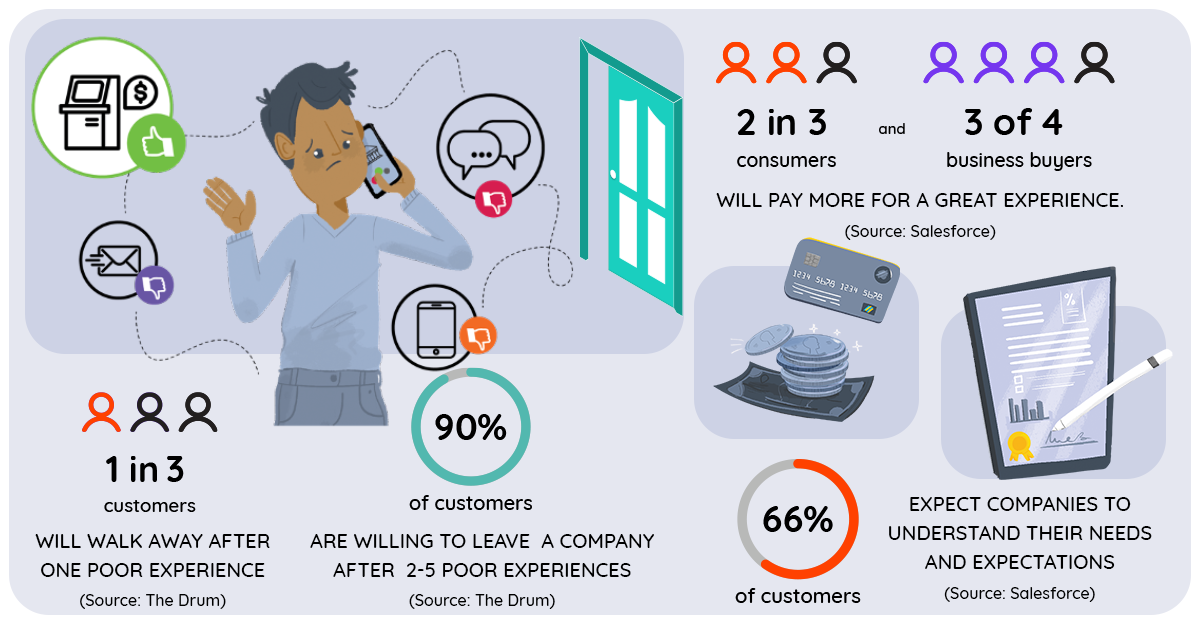So, you’ve been tasked with transforming your organization’s customer experience.
Maybe you’ve been planning this career move for years. Maybe you volunteered on a whim. Or maybe you turned up late to the meeting and learned you’ve been nominated in absentia. Regardless, congratulations! You’re now a key success driver in your organization.
Your first few weeks in the customer experience – or CX - world can be as daunting as they are exhilarating. Everyone knows what a CFO or a Head of HR does, but CX is a new frontier. You might have a nagging feeling that your new role is increasingly more complicated than it was just minutes ago, when you were certain you understood it. How do you know where your role starts and ends? How do you navigate dated company culture and technologies that don’t talk to each other? How do you justify the budget? What do you do first?
Don’t panic, we’re here to help. Here’s a quick primer on what those two letters in your new job title really mean.

What customer experience really means
Gartner’s Ed Thompson defines CX as “the customer’s perceptions and related feelings by the one-off and cumulative effect of interactions with a supplier’s employees, systems, channels, or products.”
We can boil this down even further to just two key words: “feelings” and “channels”.
Thompson’s definition notes nothing about internal processes; no assumption that the customer cares about complexity. To the chagrin of nearly every organization, CX happens whether a customer is being reasonable or not. In fact, the adage “the customer is always right” is even more powerful to today’s consumers. Wrong or right action, the response it garners is an experience that ultimately shapes their decisioning.
CX is driven by emotions, not insights
CX centers upon how a customer feels, their emotions. It’s subjective, entirely influenced by their perspective and view of their own personal journey. It has little to do with what is really happening in your company. They have no context for understanding the complex – often siloed – work happening behind the scenes of customer service interactions. They don’t have insight into the havoc changing regulations can have or the sheer number of resources it takes to help them achieve their goal. Moreover, they don’t care. You don’t get a special exception because you said no to their request however valid your reasons.
Customers want channel options, all of them
The other keyword is “channels”. Channels are crucial because a customer’s experience can be different in various formats. Equally important is meeting their expectation that information will be provided to them in a timely manner, on their preferred channel. If you can only interact with a customer via email or print, and the customer wants SMS - or to engage via mobile app the channel influences their overall feelings towards the experience.
Great CX-pectations
As the CX leader, you are responsible for how a customer feels about your organization. You are charged with facilitating and enhancing experiences on every channel that a customer expects. Which is, you guessed it, all of them. Since few companies are truly and efficiently omnichannel today, you likely have your work cut out for you. So, here’s another letter you need to know. M – as in management.
Customer experience management (CXM) to be exact. It’s a relatively new discipline, but it’s crucial to your company’s long-term survival. CX is how you define your problem; CXM is how you solve it.
Customer experience management tools bring CX success
To truly understand customers and consistently deliver experiences that meet their needs, you must develop expertise in CXM strategy and tools. CXM is a complex area rife with sub-disciplines. You’ll need to become experts in journey mapping, learn how to collaborate remotely for design thinking workshops, find ways of prioritizing tasks to spend wisely, and how to orchestrate and automate your experiences to make every customer to feel individually special. You’ll also need to do it all at scale and before your competitor does.
Sound like a tall order? The solution is technology.
Inspire Journey is the only customer journey management solution capable of supporting your CX transformation from your first tentative steps through to the delivery of market-leading results.
Contact us to learn how we can support your success.
